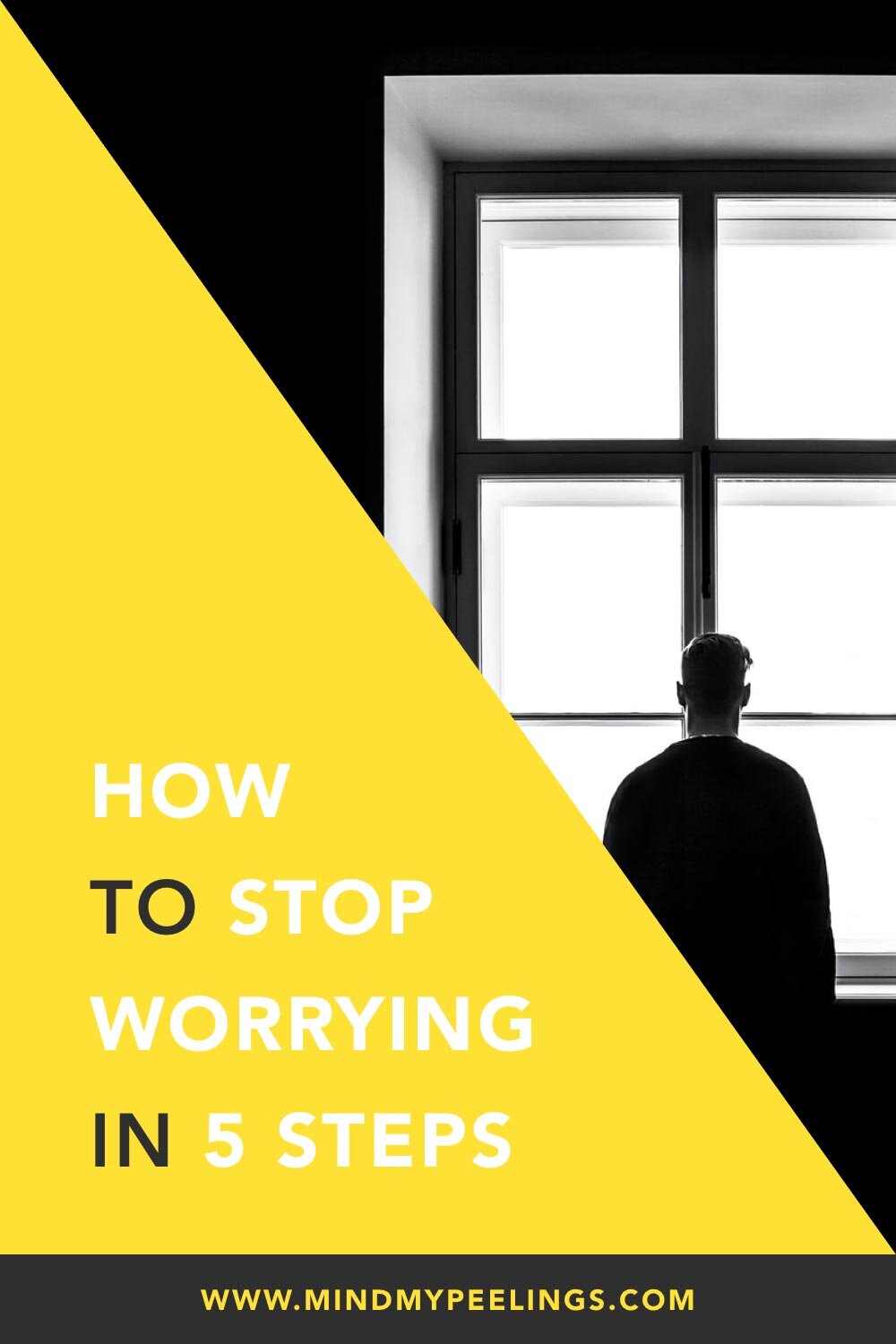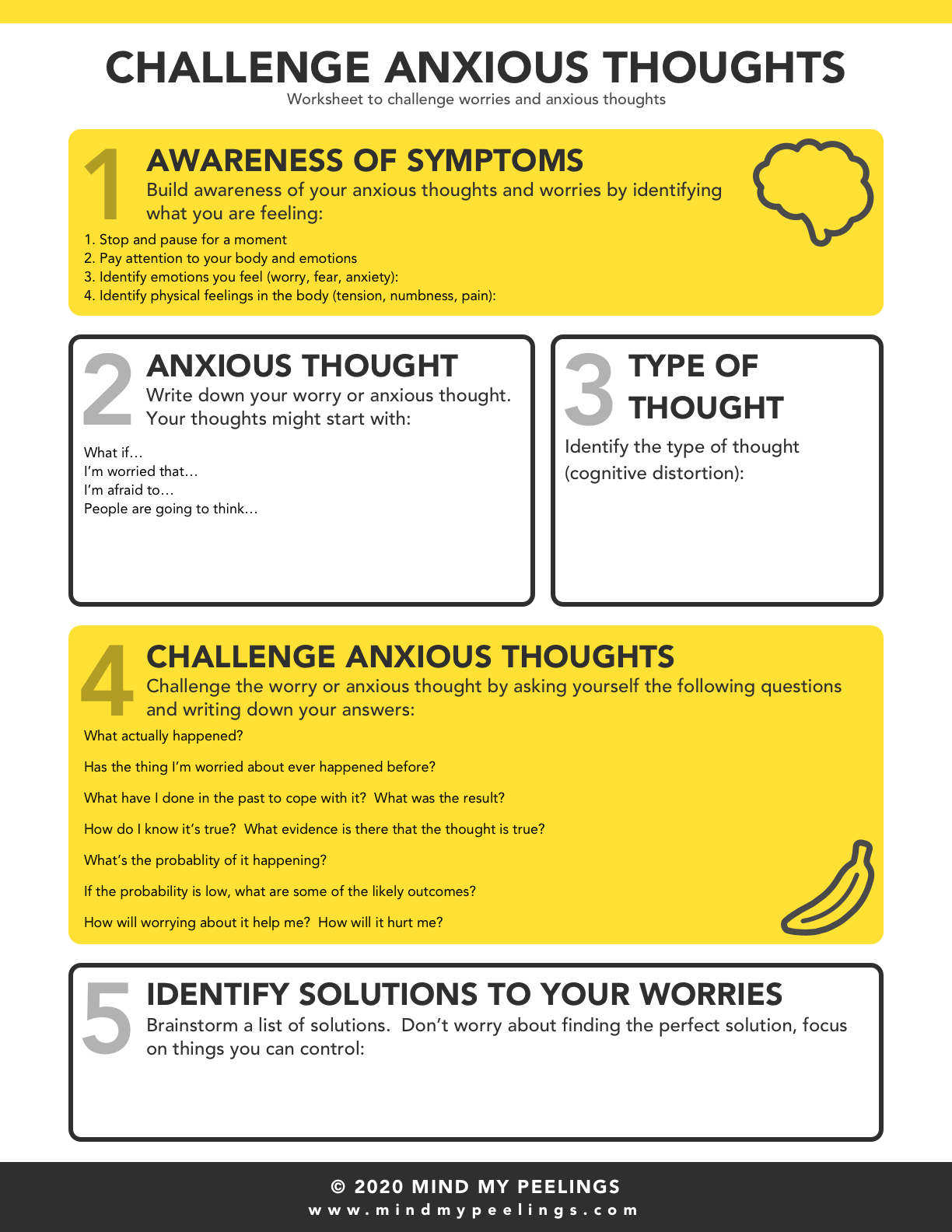How to Challenge Worries and Anxious Thoughts
Some worry and anxiety is a normal part of daily life. However, if you are suffering from constant worrying or being anxious, you are not alone.
Did you know, a study found that 91% of people's worries were false alarms. Of the 9% of worries that did come true, the outcome was better than expected about a third of the time.
This shows up as various signs and symptoms of anxiety in your mind and body. This can take a toll on your emotional wellbeing and be exhausting. Here are 5 simple steps of how to stop the excessive worrying and anxiety.
What Causes Worrying and How it Affects You
Worrying is a natural instinct that is meant to protect or alert us when we are in danger.
While our world we live in has evolved into something so much more complex, the way we worry has not adapted to the complex problems we face daily.
This leads to chronic anxiety, stress, and worrying, which affects your health not only mentally but physically, and socially as well.
Why We Worry
Anxiety, stress, and worry is an evolutionary trait. To understand this, let's look at a giraffe as an example.
Giraffes live in what scientists call an Immediate-Return Environment. This means your actions instantly deliver clear and immediate outcomes. This is a natural instinct and helps protect the giraffe. For example:
the giraffe feels hungry > worries about hunger > searches for food > the worry is relieved
a storm’s coming > worries about finding shelter > looks for shelter > anxiety is relieved
a lion appears nearby > feels stressed > runs away > stress is relieved
For almost 200,000 years, the modern human brain has lived in an Immediate-Return Environment. It was only in the last 500 years that the brain evolved into a Delayed Return Environment.
A Delayed Return Environment is when you make choices today that will not benefit you immediately, such as:
getting a good education today could lead to a better career
if you save money today, you will have enough for retirement later
if I exercise now, I will be healthier
However, there is an inherent flaw in this environment. This leads to chronic stress and anxiety for humans because our brains were not designed to solve problems in a Delayed Return Environment.
How Much Worrying is too Much
Worrying is a normal part of life. Everyone will experience worry on a regular basis. But most people are capable of dealing with anxious thoughts without much difficulty.
Worrying becomes a problem when it becomes excessive, negative, and begins to take a toll on all three aspects of health: physical, mental, and social health.
Here are some common signs and symptoms of excessive worrying:
feeling emotionally or mentally drained
feeling restless and have difficulty sleeping
difficulty focusing or being productive
headaches or stomach problems
your relationships feel strained
frequently distracted by your thoughts
avoiding activities you would normally do
It is important to recognize that each person may experience slightly different symptoms. You can perform an awareness exercise to identify your symptoms with this worksheet.
Why It’s So Difficult to Stop Worrying
To understand why it’s so hard to stop worrying, we need to understand how the mind works.
When you have a negative experience and you are not able to face the situation, your mind responds defensively and you experience fight, flight, or freeze responses.
This is a normal response and your mind will create a pathway of connections for that particular response. But the next time you experience something similar, it may trigger those same responses.
This is because the mind likes to take shortcuts and if it thinks something is similar it will trigger that pathway connection resulting in those responses.
If you want to stop worrying, you need to break that triggered response and create a new pathway that allows you to respond in a positive way. Breaking existing pathways wired in your brain is difficult because your mind doesn’t like change.
It’s similar to breaking a bad habit. It’s easy for the bad habit to form but can take a lot of effort to try and change that habit. It takes discipline with the awareness to make the continuous effort of change.
How to Stop Worries and Anxious Thoughts
If you experience obsessive worrying, stressful, or anxious thoughts, you are probably wondering how to stop feeling anxious. But when we try to get rid of those feelings, the anxiety or fear grows.
When we welcome those feelings, they tend to go away due to the acceptance of those feelings. Controlling negative thoughts becomes much more beneficial than trying to stop or avoid negative thoughts.
Follow this simple 5 step process to challenge worrying and anxious thoughts:
Build Awareness of Symptoms
Write Down Anxious Thoughts
Identify the Type of Thought
Challenge Anxious Thoughts
Brainstorm Solutions
1. Identify What Anxiety and Stress Symptoms You Experience
The first step to challenging anxious thoughts and worries is to first understand what happens to you and your body:
Stop and pause for a moment
Pay attention to your body and emotions
Identify emotions (fear, worry, anxious thoughts)
Identify physical feelings in your body (tension, numbness, pain)
Having awareness whenever you are experiencing excessive worrying or anxious thoughts allows you an opportunity to help bring yourself back to a normal state.
This state is known as the Window of Tolerance. It is where you can function most effectively and allows you to react in a positive way to stress life can throw at you.
When you leave your Window of Tolerance, it becomes difficult to respond to the demands and stress that life may cause. If you have difficulty identifying your symptoms, try this awareness worksheet first.
2. Write Down Your Worry or Anxious Thought
When you are feeling worried and anxious, stop and pause what you are doing. Write down your worry or anxious thought. You may be thinking about more than one thought when you are feeling anxious.
Your thoughts might sound like:
What if…
I’m worried that…
I’m afraid to…
People are going to think…
Writing out your thoughts and emotions is a great tool to help process stress and anxiety. Here are some more tips to help you write out your thoughts and emotions.
3. Identify the Type of Thought
There are many different types of anxious or negative thoughts. If we want to stop negative thinking and learn how to manage stress and anxiety then we need to understand the way we think.
The thought type or thinking style is known as cognitive distortions. Cognitive distortions are ways our mind convinces us of something that is not true.
Here are a few of the 15 common cognitive distortions:
Polarized Thinking: All or nothing thinking, we have to be perfect or we are a complete failure
Jumping to Conclusions: Making negative interpretations without any actual evidence
Catastrophizing: Expecting the worst possible outcome
Filtering: Magnifies negative details and filters out positive ones
Labelling: Assigning labels to ourselves or other people
Identify the cognitive distortion that applies to your worry or anxious thought. This will help you understand that what you are thinking about is untrue and not likely to happen.
4. Challenge Anxious Thoughts by Questioning
You can challenge the worry or anxious thoughts by questioning it. Spend some time thinking about the answer and write it out.
Questions you can ask yourself:
What actually happened?
Has the thing I’m worried about ever happened before?
What have I done in the past to cope with it? What was the result?
How do I know it’s true? What evidence is there that the thought is true?
What’s the probability of it happening? If the probability is low, what are some more likely outcomes?
How will worrying about it help me? How will it hurt me?
5. Brainstorm Solutions to Your Worries
Start with trying to identify what was the cause of the worry or anxious thought. If you can identify the cause, you can then have the power to eliminate it and prevent it from happening again.
Distinguish Between Solvable and Unsolvable Worries
The main difference is that you can take action right away for solvable worries, whereas unsolvable worries you have no control over.
If your worry is solvable, start brainstorming solutions to control the narrative. Don’t worry about trying to find the perfect solution. Focus on what you can control.
If your worry is something that has happened before, think about things you have done in the past or what others have done.
You may find comfort in knowing that you have overcome it previously. This is one of the ways to soothe anxiety and reduce the stress it creates.
After evaluating solutions, make a plan of how to accomplish it. Break it down into small steps and write it out. Once you have a plan, start doing it and you’ll begin to feel less anxious.
If your worry is unsolvable, accept that some uncertainty is normal and that it is out of your control.
Worries are often a way we try to predict the future. But that doesn’t solve the problem. We know that we can’t predict the future.
Focus on the present and what you can control today and accept there will be some things out of your control.
Start Challenging Your Worries
Writing your thoughts down on paper can have a dramatic impact because it allows you to see what you are actually thinking about. It can give you a realization that most of your thoughts seem extreme and unlikely to happen.
To recap, there are 5 steps to challenge your worries:
Build Awareness
Write Down Your Thoughts
Identify Thinking Style
Challenge Your Thoughts
Brainstorm Solutions
Challenge Worries and Anxious Thoughts Worksheet
Download a free printable copy of the worksheet so you can start challenging your worries and anxious thoughts by questioning.
Whether you are trying to relieve your own generalized anxiety disorder or helping someone with anxiety work through their worries or anxious thought, you can go through the worksheet provided.




